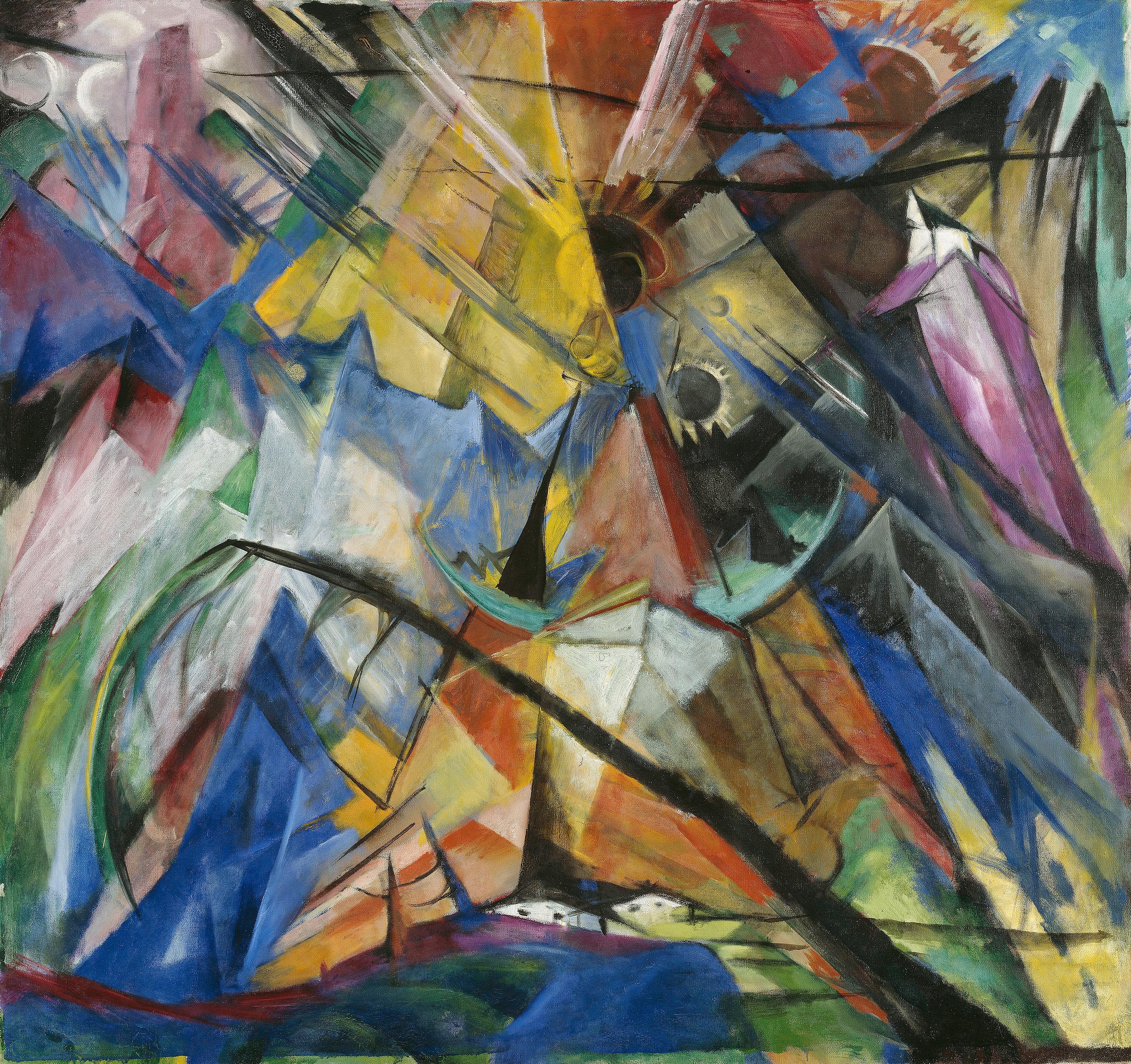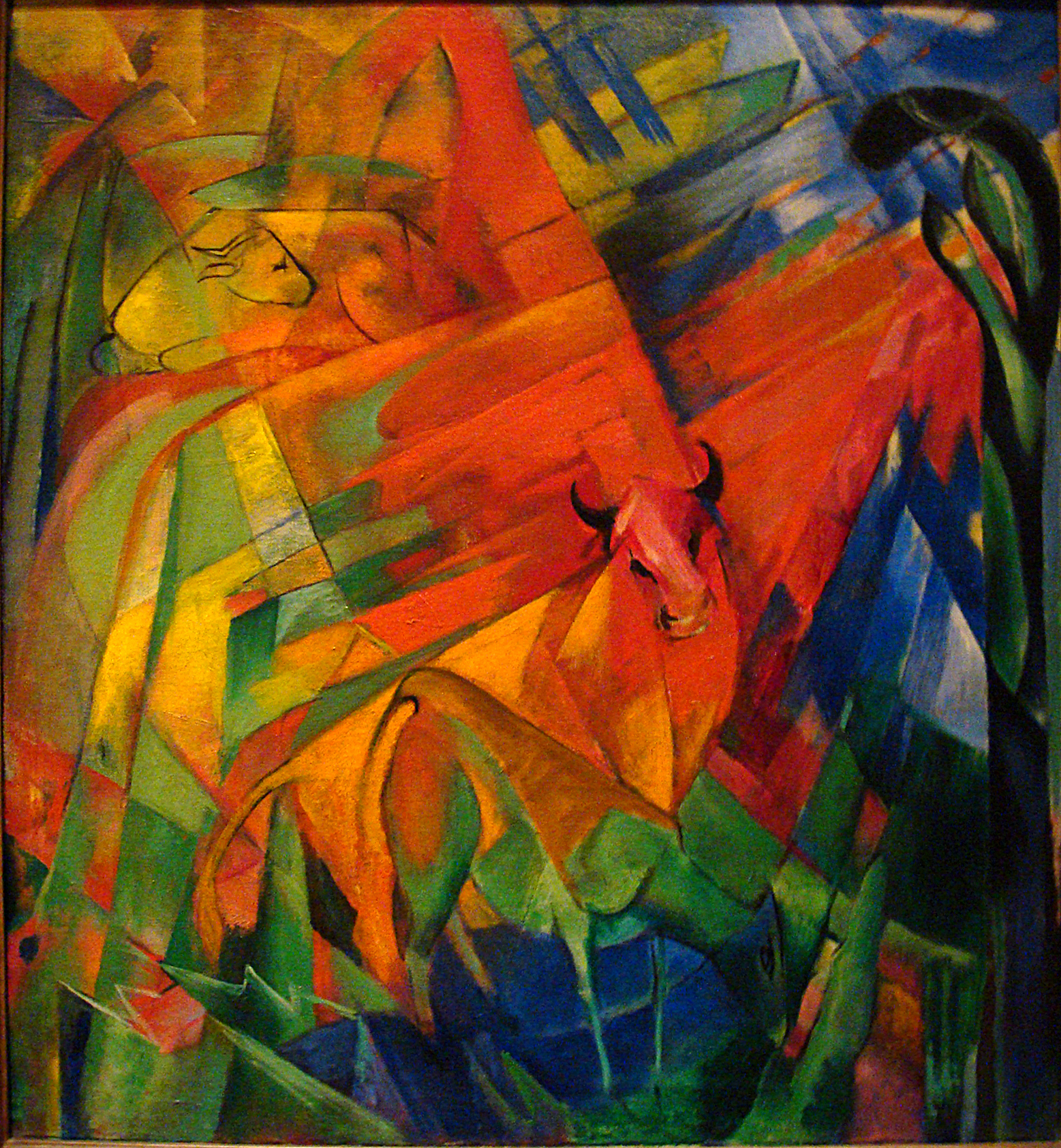Franz Marc traveled to South Tyrol in the spring of 1913. Shortly afterwards, he painted the two allegorical landscapes: The Unfortunate Land of Tyrol and Tyrol. The title of the former painting expresses what our painting also shows. In strange contrast to the crystalline mountain world in radiant colors, Tyrol itself appears as a desolate, dead land. The threat of death is particularly clear in the felled black tree, which juts into the picture at an angle to the left like a scythe.
Dissatisfied with the naturalism of the painting, Marc withdrew it from the First German Autumn Salon in Berlin in 1913 and reworked it. While the sun was still at the center in the first version, Marc now depicted Mary as an apocalyptic woman on a crescent moon in the center of the painting. This links the natural events, the battle between the light of the rising sun and the shadow of the preceding night, with the Christian events of salvation and the situation in Europe on the eve of the First World War.
In Marc's work, the Virgin of Mercy in the Tyrolean mountains threatened by death is a symbol of victorious faith in the powers of the spirit over matter. The faceting of color and form, which makes the Alps look like glowing rock crystals, shows Marc's engagement with Futurism and even more so with Robert Delaunay's spectral-colored Orphism. Delaunay's Eiffel Towers growing dynamically upwards towards the sky and his prismatic window paintings obviously influenced Marc's Tyrol. Delaunay's rationally structured color structure, however, conceived as a hymn to the cosmopolitan city of Paris, is transformed by Marc into a mystical dream world, becoming a parable of the creation of the world and its hoped-for renewal.
We present today's surprising work thanks to the Bayerische Staatsgemäldesammlungen - Sammlung Moderne Kunst (Modern Art Collection) in Munich. :)
P.S. If you love such surprising works, please check our 2025 DailyArt Calendars, which are full of beautiful masterpieces and stories about them.
P.P.S. Robert Delaunay's Eiffel Tower paintings were some of the most fascinating early-20th-century cityscapes. They're so dynamic, almost as if the tower were alive.


 Franz Marc
Franz Marc